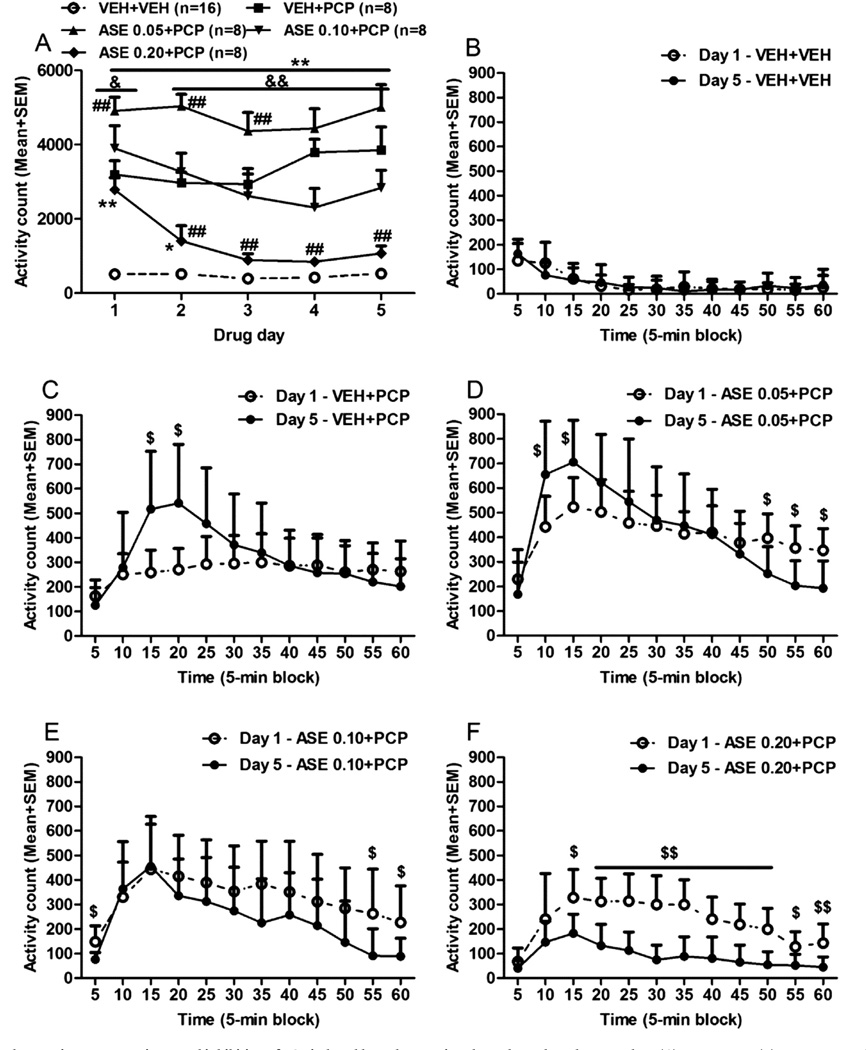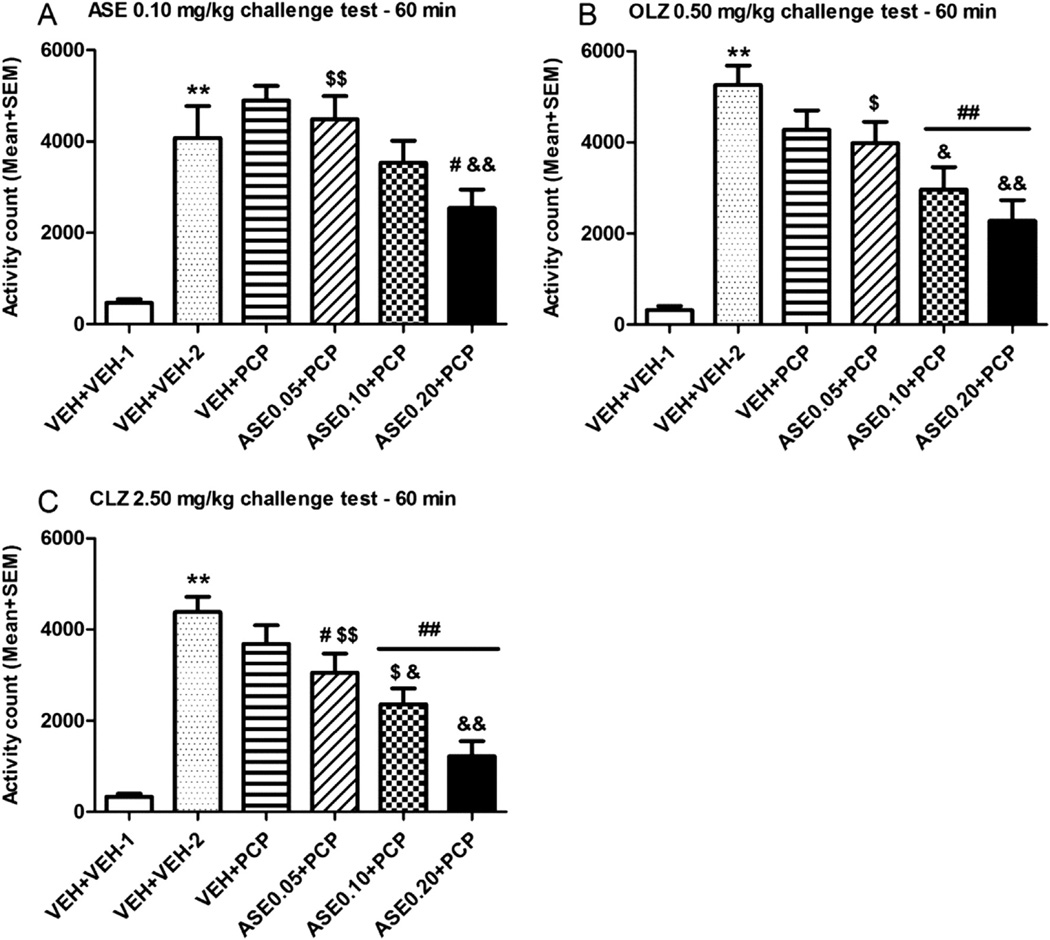
| Size | Price | Stock | Qty |
|---|---|---|---|
| 25mg |
|
||
| 50mg |
|
||
| 100mg |
|
||
| 250mg |
|
||
| 500mg |
|
||
| 1g |
|
||
| 2g |
|
||
| 5g |
|
||
| Other Sizes |
|
Purity: ≥98%
Asenapine maleate (Org5222; Org-5222; HSDB-8061; HSDB8061; Saphris and Sycrest), an atypical antipsychotic, is a potent and high-affinity antagonist of serotonin, norepinephrine, dopamine and histamine receptors. Asenapine has been authorized for use as an atypical antipsychotic in the treatment of acute mania brought on by bipolar disorders and schizophrenia. Based on initial data, it appears to have negligible side effects related to anticholinergic and cardiovascular systems, along with negligible weight gain. The FDA gave it their approval in August 2009.
| Targets |
sPLA2 ( Ki = 2.5 nM ); 5-HT2A Receptor ( Ki = 0.06 nM ); 5-HT2C Receptor ( Ki = 0.03 nM ); 5-HT7 Receptor ( Ki = 0.13 nM ); D2 Receptor ( Ki = 1.3 nM ); D3 Receptor ( Ki = 0.42 nM ); D4 Receptor ( Ki = 1.1 nM )
|
||
|---|---|---|---|
| ln Vitro |
Asenapine has a higher affinity for 5-HT2C, 5-HT2A, 5-HT2B, 5-HT7, 5-HT6, α2B, and D3 receptors than it does for D2 receptors. This suggests that these targets will be more strongly engaged at therapeutic doses. At 5-HT1A (7.4), 5-HT1B (8.1), 5-HT2A (9.0), 5-HT2B (9.3), 5-HT2C (9.0), 5-HT6 (8.0), 5-HT7 (8.5), D2 (9.1), D3 (9.1), α2A (7.3), α2B (8.3), α2C (6.8), and H1 (8.4) receptors, asenapine exhibits potent antagonist (pKB) behavior[2].
|
||
| ln Vivo |
Asenapine is an atypical antipsychotic that is being used to treat bipolar I disorder and schizophrenia. Compared to other agents, asenapine may have a better therapeutic effect on anxiety symptoms in rats[3]. In the defensive marble burying test and the EPM, asenapine exhibits anxiolytic-like effects in mice[4].
|
||
| Enzyme Assay |
Asenapine has a higher affinity for 5-HT2C, 5-HT2A, 5-HT2B, 5-HT7, 5-HT6, α2B, and D3 receptors than it does for D2 receptors. This suggests that these targets will be more strongly engaged at therapeutic doses. At 5-HT1A (7.4), 5-HT1B (8.1), 5-HT2A (9.0), 5-HT2B (9.3), 5-HT2C (9.0), 5-HT6 (8.0), 5-HT7 (8.5), D2 (9.1), D3 (9.1), α2A (7.3), α2B (8.3), α2C (6.8), and H1 (8.4) receptors, asenapine exhibits potent antagonist (pKB) behavior.
|
||
| Animal Protocol |
|
||
| References |
|
||
| Additional Infomation |
(S,S)-asenapine maleate is a maleate salt obtained by combining equimolar amounts of (S,S)-asenapine and maleic acid. It contains a (S,S)-asenapine(1+). It is an enantiomer of a (R,R)-asenapine maleate.
See also: Asenapine (has active moiety). Drug Indication Sycrest is indicated for the treatment of moderate to severe manic episodes associated with bipolar I disorder in adults. Treatment of bipolar I disorder |
| Molecular Formula |
C21H20CLNO5
|
|---|---|
| Molecular Weight |
401.84
|
| Exact Mass |
401.103
|
| Elemental Analysis |
C, 62.77; H, 5.02; Cl, 8.82; N, 3.49; O, 19.91
|
| CAS # |
85650-56-2
|
| Related CAS # |
Asenapine; 65576-45-6; Asenapine hydrochloride; 1412458-61-7
|
| PubChem CID |
6917875
|
| Appearance |
White to off-white solid powder
|
| Boiling Point |
357.9ºC at 760 mmHg
|
| Melting Point |
141-145°
|
| Flash Point |
170.2ºC
|
| LogP |
3.908
|
| Hydrogen Bond Donor Count |
2
|
| Hydrogen Bond Acceptor Count |
6
|
| Rotatable Bond Count |
2
|
| Heavy Atom Count |
28
|
| Complexity |
482
|
| Defined Atom Stereocenter Count |
2
|
| SMILES |
ClC1C([H])=C([H])C2=C(C=1[H])[C@@]1([H])C([H])([H])N(C([H])([H])[H])C([H])([H])[C@]1([H])C1=C([H])C([H])=C([H])C([H])=C1O2
|
| InChi Key |
GMDCDXMAFMEDAG-CHHFXETESA-N
|
| InChi Code |
InChI=1S/C17H16ClNO.C4H4O4/c1-19-9-14-12-4-2-3-5-16(12)20-17-7-6-11(18)8-13(17)15(14)10-19;5-3(6)1-2-4(7)8/h2-8,14-15H,9-10H2,1H3;1-2H,(H,5,6)(H,7,8)/b;2-1-/t14-,15-;/m1./s1
|
| Chemical Name |
(Z)-but-2-enedioic acid;(2S,6S)-9-chloro-4-methyl-13-oxa-4-azatetracyclo[12.4.0.02,6.07,12]octadeca-1(18),7(12),8,10,14,16-hexaene
|
| Synonyms |
HSDB 8061; Org5222; Org-5222; HSDB-8061; Org 5222; HSDB 8061; Org 5222; HSDB8061; Asenapine; Asenapine maleate; trade names: Saphris; Sycrest
|
| HS Tariff Code |
2934.99.9001
|
| Storage |
Powder -20°C 3 years 4°C 2 years In solvent -80°C 6 months -20°C 1 month Note: Please store this product in a sealed and protected environment, avoid exposure to moisture. |
| Shipping Condition |
Room temperature (This product is stable at ambient temperature for a few days during ordinary shipping and time spent in Customs)
|
| Solubility (In Vitro) |
|
|||
|---|---|---|---|---|
| Solubility (In Vivo) |
Solubility in Formulation 1: ≥ 2.5 mg/mL (6.22 mM) (saturation unknown) in 10% DMSO + 40% PEG300 + 5% Tween80 + 45% Saline (add these co-solvents sequentially from left to right, and one by one), clear solution.
For example, if 1 mL of working solution is to be prepared, you can add 100 μL of 25.0 mg/mL clear DMSO stock solution to 400 μL PEG300 and mix evenly; then add 50 μL Tween-80 to the above solution and mix evenly; then add 450 μL normal saline to adjust the volume to 1 mL. Preparation of saline: Dissolve 0.9 g of sodium chloride in 100 mL ddH₂ O to obtain a clear solution. Solubility in Formulation 2: ≥ 2.5 mg/mL (6.22 mM) (saturation unknown) in 10% DMSO + 90% (20% SBE-β-CD in Saline) (add these co-solvents sequentially from left to right, and one by one), clear solution. For example, if 1 mL of working solution is to be prepared, you can add 100 μL of 25.0 mg/mL clear DMSO stock solution to 900 μL of 20% SBE-β-CD physiological saline solution and mix evenly. Preparation of 20% SBE-β-CD in Saline (4°C,1 week): Dissolve 2 g SBE-β-CD in 10 mL saline to obtain a clear solution. View More
Solubility in Formulation 3: ≥ 2.5 mg/mL (6.22 mM) (saturation unknown) in 10% DMSO + 90% Corn Oil (add these co-solvents sequentially from left to right, and one by one), clear solution. Solubility in Formulation 4: 1.2 mg/mL (2.99 mM) in PBS (add these co-solvents sequentially from left to right, and one by one), clear solution; with ultrasonication. |
| Preparing Stock Solutions | 1 mg | 5 mg | 10 mg | |
| 1 mM | 2.4886 mL | 12.4428 mL | 24.8855 mL | |
| 5 mM | 0.4977 mL | 2.4886 mL | 4.9771 mL | |
| 10 mM | 0.2489 mL | 1.2443 mL | 2.4886 mL |
*Note: Please select an appropriate solvent for the preparation of stock solution based on your experiment needs. For most products, DMSO can be used for preparing stock solutions (e.g. 5 mM, 10 mM, or 20 mM concentration); some products with high aqueous solubility may be dissolved in water directly. Solubility information is available at the above Solubility Data section. Once the stock solution is prepared, aliquot it to routine usage volumes and store at -20°C or -80°C. Avoid repeated freeze and thaw cycles.
Calculation results
Working concentration: mg/mL;
Method for preparing DMSO stock solution: mg drug pre-dissolved in μL DMSO (stock solution concentration mg/mL). Please contact us first if the concentration exceeds the DMSO solubility of the batch of drug.
Method for preparing in vivo formulation::Take μL DMSO stock solution, next add μL PEG300, mix and clarify, next addμL Tween 80, mix and clarify, next add μL ddH2O,mix and clarify.
(1) Please be sure that the solution is clear before the addition of next solvent. Dissolution methods like vortex, ultrasound or warming and heat may be used to aid dissolving.
(2) Be sure to add the solvent(s) in order.
| NCT Number | Recruitment | interventions | Conditions | Sponsor/Collaborators | Start Date | Phases |
| NCT01460290 | Completed | Drug: Asenapine | Bipolar Disorder | University Hospitals Cleveland Medical Center |
October 2011 | Phase 4 |
| NCT01400113 | Completed | Drug: Asenapine Drug: Placebo |
Radiation Injuries | Unity Health Toronto | April 2012 | Phase 4 |
| NCT01349907 | Completed | Drug: Asenapine Drug: Rescue medication |
Bipolar Disorder | Organon and Co | June 16, 2011 | Phase 3 |
| NCT01395992 | Completed | Drug: asenapine | Bipolar I Disorder | Forest Laboratories | April 2012 | Phase 3 |
| NCT01396291 | Completed | Drug: asenapine Drug: placebo |
Bipolar 1 Disorder | Forest Laboratories | December 2011 | Phase 3 |
|
|---|
 |
 |